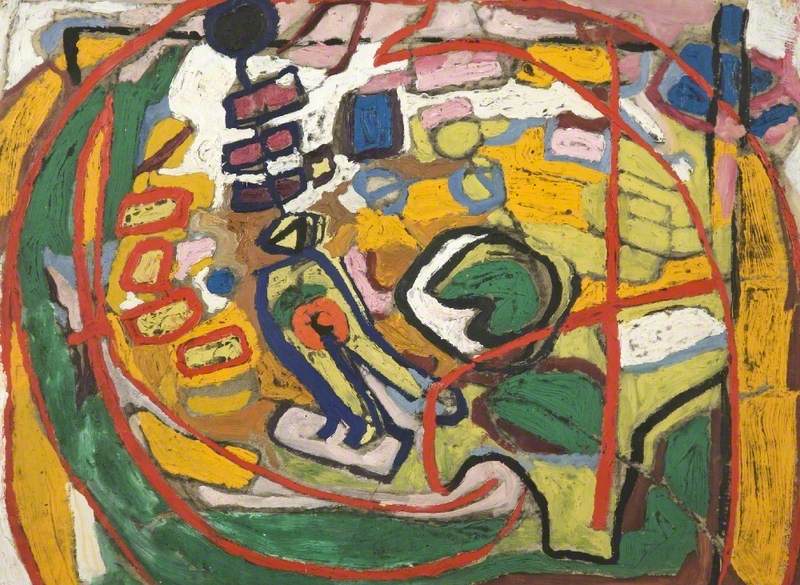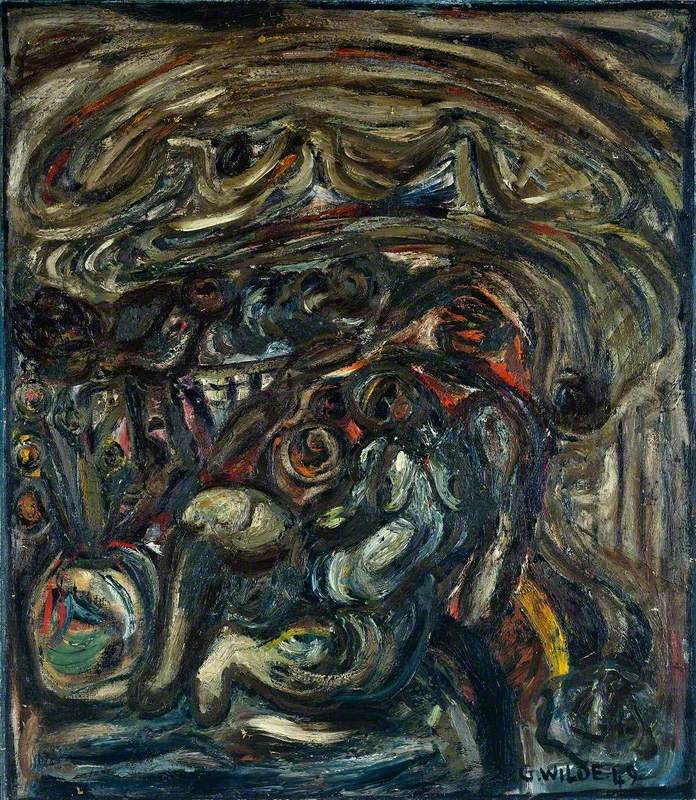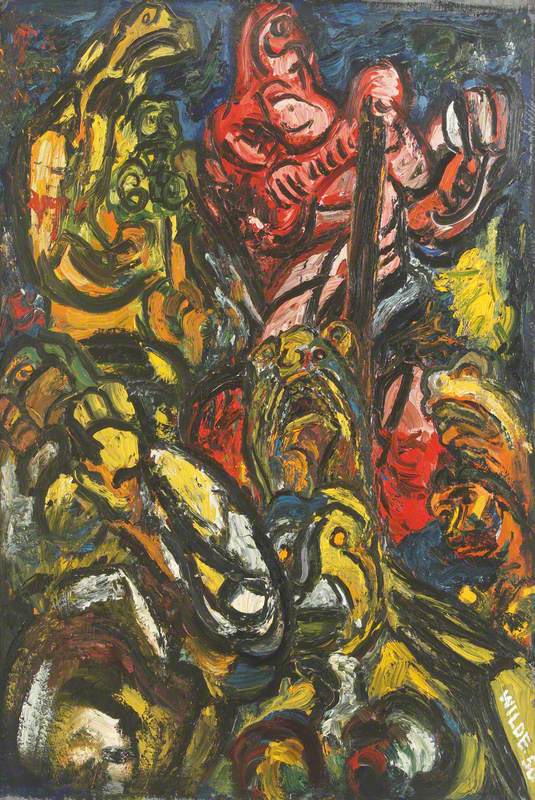
Painter, draughtsman and textile designer, born in London, who lost an eye in a childhood accident. After working in a solicitor’s office Wilde attended Chelsea School of Art, 1926–31, and 1932–4, under Percy Hague Jowett and H S Williamson. His teachers Henry Moore and Graham Sutherland were strong advocates of Wilde’s work, as were the critics John Berger and David Sylvester. An early setback for Wilde was destruction of his work in the Blitz. Following service in the Pioneer Corps in World War II he had his first one-man show at the Hanover Gallery in 1948, also showing with AIA, NEAC, LG and elsewhere. He was early collected by men of perception, such as Sir Edward Marsh, Lord Clark and Peter Watson. Wilde’s work is usually abstract, and he employed a unique style of line and colour, as seen in the Tate Gallery’s examples: Fata Morgana, of 1949, and Red Composition, of 1952.
Text source: 'Artists in Britain Since 1945' by David Buckman (Art Dictionaries Ltd, part of Sansom & Company)






